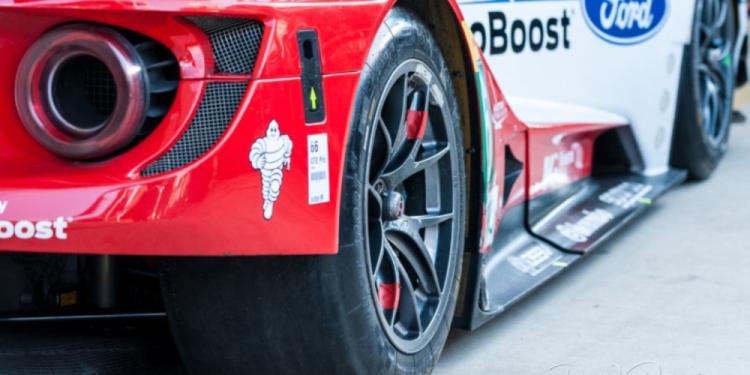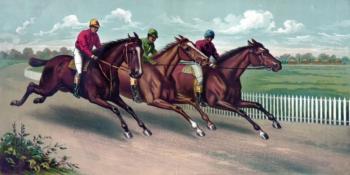Weirdest Stories About Le Mans Races
Posted: December 21, 2022
Updated: December 21, 2022
-
Memorable Le Mans moments
-
Tragedies and funny stories
-
Weirdest stories about Le Mans races

This year, the legendary Le Mans 24 Hours race was held for the 90th time. Thousands of competitors have already competed and tried their luck at one of the most famous car races since the first event in 1923. Almost under a century, the weirdest stories about Le Mans races came to light, some of which we will share with you in this article! Stories about triumph, failure, and recklessness!
How it All Began
The Automobile Club de I’Ouest organized the first Le Mans 24 Hours race in 1923. Until then, motorsport was mainly limited to relatively short Grand Prix races, requiring unique, fast, and advanced technology. However, these had little to do with ordinary models that anyone could purchase. ACO’s goal was to encourage manufacturers to make fast and reliable cars that they could test in the race and further develop into street models.
The venue was Le Mans in the Loire region. The Bugatti track already existed there, to which a larger part was added from the surrounding public roads, thus creating the 13.6-kilometer-long Circuit de la Sarthe track. Of course, in the early days, the track looked different than it does today. In the first race, 33, mostly French, teams competed. The cars lined up on one side of the finish line, and the drivers lined up on the opposite side of the track.
At the start signal, everyone ran to their car, jumped in, started the engine, and they were on their way. In the end, the André Lagache–René Leonard duo proved to be the best with a Chenard & Walcker Sports car. The pair completed 128 laps in one day at an average pace of 92 kilometers per hour. At the opening ceremony, Bentley and Bugatti also participated in the race. Of course, it’s different today! Here is an article about 7 things to grasp when learning how to gamble on motorsports, then check out the odds at 22Bet Sportsbook!
Weirdest Stories About Le Mans Races
The 1966 race was dominated by the Ford GT40s. Nearing the end of the race, the first and second-place cars by the Shelby-American team already had a 12-lap advantage over the Holman & Moody team, which also entered with a GT40.
That’s why Ford wanted to organize a finish where the three cars reached the finish line only meters apart. They thought it would look epic in photographs. The Ken Miles-Dennis Hulme duo led the race, shortly ahead of the Bruce McLaren-Chris Amon duo.
Miles, probably the best British sports car racer of the era, could have achieved a special triple victory, as he had previously won the 24 Hours of Daytona and the 12 Hours of Sebring. At the finish line, only a few meters separated the cars of Miles and McLaren. Cameras flashed, pictures were taken, and Ford was happy! Or not? At the time, according to the rules, the difference between the starting positions of the two cars mattered in the final result.
Since the McLarens started further, they covered a greater distance overall. So the organizers finally announced that the New Zealander won with an eight-meter difference. Miles was disappointed, understandably. Unfortunately, he could not try Le Mans again. As fate would have it, a few months later, he was involved in a fatal accident in Riverside, California, while testing the GT40’s successor, the J-Car. If you are interested in one of the weirdest stories about Le Mans races, watch the Ford vs. Ferrari movie!
From a Pub to the Racing Track
In the history of the Le Mans 24 Hours races, there are plenty of stories where an underdog won the competition. For example, the double success of Tony Rolt and Duncan Hamilton in 1953. They believed they were disqualified due to a minor technical error.
The problems stemmed from the fact that two Jaguars were racing with the same number at the same time. One was the car of the Rolt-Duncan duo, and the other was sent to the track by mistake. The British manufacturer’s chairman, Sir William Lyon, took responsibility for the error.
He said it was just an accident, not intended to cheat, and paid the fine. However, the contestants disappeared from the face of the earth. After a long search, the mechanics found Rolt and Hamilton in a pub a few hours before the start, curing their hangover with a barrel of coffee.
After getting them into a car, they won the race with a four-lap advantage. It is part of the truth that later, Tony Rolt called the story a highly colored urban legend. The Jaguar team principal claimed that he would never have let them in a car drunk.
Weirdest Stories about Le Mans Races
Then there is the case of Jean Rondeau, who entered the 1980 race alongside Jean-Pierre Jaussaud in a Cosworth car he designed and built himself. Although its budget was only a fraction of a Porsche, which was preparing for an overwhelming victory, in the end, the French unit triumphed with a two-lap advantage.
In addition, the crew of the other Rondeau car could stand on the podium. This was the only time in the history of Le Mans races that someone has won with a car bearing their own name.
However, the success of the McLaren F1 GTR introduced by Kokusai Kaihatsu Racing in 1995 stands out among the weirdest stories about Le Mans races. Although the F1 was supposed to be just a simple street sports car, a handful of enthusiastic and influential owners eventually convinced the car’s designer, Gordon Murray, to make it suitable for racing.
The car had potential, as it wiped the floor with its rivals in the BPR GT Series, the predecessor of the FIA GT Championship, but no one thought it would stand a chance against the much faster Le Mans prototypes.
1995 was the rainiest Le Mans 24 Hours of all time. The weather was much more favorable to the GT cars, as the prototypes lost their superiority in the wet conditions. In addition, F1 proved to be much more reliable than its competitors.
In the end, the trio of Yannick Dalmas, Masanori Sekiya, and JJ Lehto was the first to see the checkered flag. Courage, the favorite, finished second with only one lap behind. In addition, a McLaren F1 GTR also finished in third, fourth, and fifth place. It was the first time since 1950, and the last that a street car won the 24-hour race.
Racing Alone is Dangerous!
According to online gambling sites in France, today, the rules are very strict about how much time a competitor can spend in the car during the 24 hours. However, it was different in the past. There are countless examples of a competitor driving a significant part of the race alone. In 1950, Louis Rosier and his son Jean-Louis shared a Talbot-Lago T26 GS, but not equally, since Louis let go of the wheel for only 45 minutes. Amazingly, the father-son duo ended up winning the race.
Until now, only Pierre Levegh completed the 24 hours alone, back in 1952 when he almost won. Although René Marchand’s name appeared on the start list alongside Levegh, the French driver, who also competed in Formula 1, never once gave up the opportunity to his colleague. Even in the last hour, Levegh was in the lead with a rather old Talbot-Lago T26 GS Spyder, ahead of the Mercedes 300SLs representing the most modern technology. Then, presumably due to fatigue, he spun off and over-revved the engine, and the Frenchman had to stop.
Regardless of what happened, his heroic performance is legendary. However, his name reminds us more of the Le Mans tragedy of 1955, which claimed the lives of more than 80 spectators. The French driver also died on the spot, and although the general opinion later emerged that Levegh was the cause of the accident, in fact, he could have done the least about the dramatic course of events.
1955 Le Mans Tragedy
The events at LeMans resembled a disaster drama. The worst racing accident ever occurred in 1955 at the 24 Hours of LeMans. During an unfortunate pit stop, Lanc Macklin’s slowing car got in front of the speeding Pierre Levegh. After the high-speed collision, Levegh’s car flew into the air, straight into the auditorium. As a result of the impact, Levegh flew out of the Mercedes and died instantly. The car built with magnesium immediately burst into flames.
The wrecked racing car and its parts flew into the spectators at a terrible speed, where 84 people lost their lives, and another 100 were injured. No one was found solely responsible among the drivers. Experts criticized the construction of the 30-year-old track, which proved unsuitable for such speed. Mercedes withdrew from racing until 1989. This was one of the most tragic and weirdest stories about Le Mans racing.
Click here to try 100% up to €100 bonus at 22bet Sportsbook












